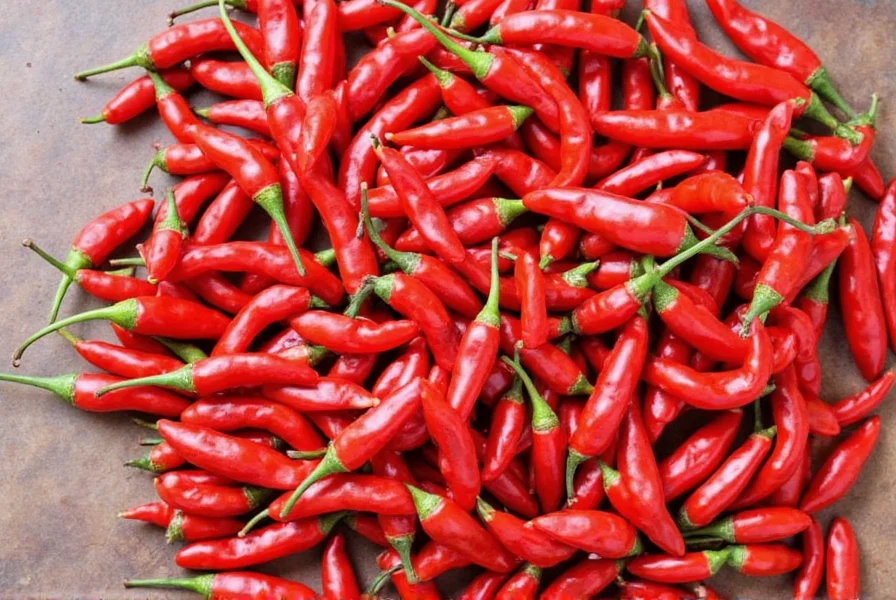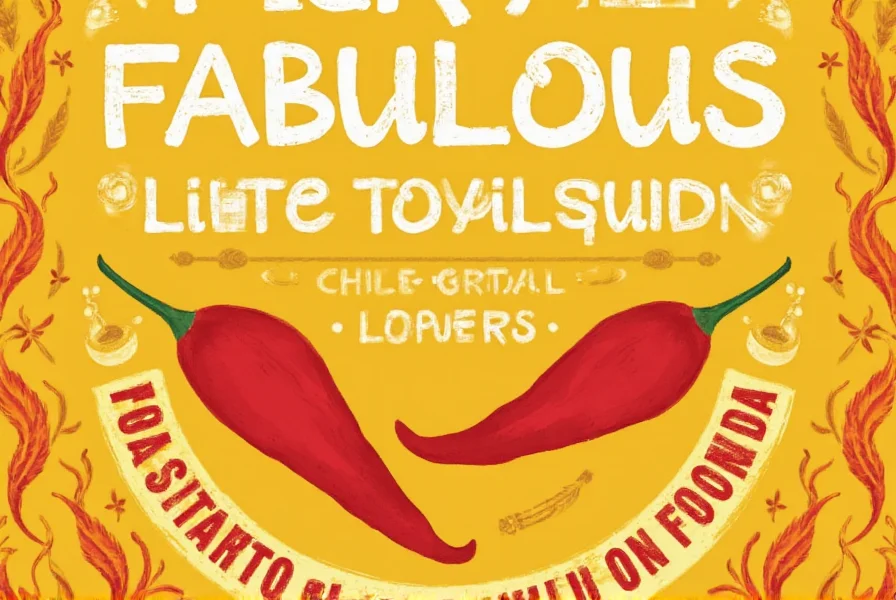Chile de árbol, also known as 'tree chili,' is a Mexican pepper with a Scoville Heat Unit (SHU) range of 15,000 to 30,000, making it about 3-12 times hotter than jalapeños. This guide covers everything you need to know about this versatile pepper, including its heat level, uses, storage, and health benefits, based on information from the USDA Food Database and Mexican culinary experts.
Understanding the Heat: How Spicy is Chile de Árbol?
Chile de árbol ranks between 15,000 and 30,000 Scoville Heat Units (SHU). That puts it right up there with popular peppers like cayenne and hotter than jalapeños, but not quite as intense as habaneros.
| Pepper | Scoville Heat Units (SHU) |
|---|---|
| Jalapeño | 2,500–8,000 |
| Chile de Árbol | 15,000–30,000 |
| Cayenne | 30,000–50,000 |
| Habanero | 100,000–350,000 |
So if you're looking to turn up the heat without completely blowing your taste buds away, chile de árbol is your go-to pepper.
Top 5 Ways to Use Chile de Árbol in Your Kitchen
Whether you're cooking for yourself or hosting a fiesta, these five ideas will help you make the most of this fiery pepper:
- Salsa Time! Crush dried chiles with garlic, lime, and cilantro for a zesty homemade salsa.
- Oil Infusions: Make a delicious chile oil by gently heating dried pods in olive or vegetable oil.
- Marinades: Add crushed or chopped fresh chiles to meat or tofu marinades for extra kick.
- Roasted Veggie Boost: Toss roasted veggies like carrots or Brussels sprouts with a pinch of powdered chile de árbol.
- Hot Sauces: Blend rehydrated chiles with vinegar, salt, and spices for a tangy hot sauce.
Buying Guide: Choosing the Best Chile de Árbol
When shopping for chile de árbol, you'll usually find them in either fresh, dried, or powdered forms. Here's how to pick the best one based on your needs:
| Form | Features | Best For |
|---|---|---|
| Fresh | Bright red color, firm texture | Roasting, stuffing, or adding to salsas |
| Dried | Intense flavor, easy to store | Infusions, soups, stews, or grinding into powder |
| Powder | Consistent heat, no prep needed | Seasoning meats, making dry rubs, or mixing into sauces |
Pro Tip: Look for deep red chiles with no soft spots or mold. Dried versions should snap easily when bent—not bend or crumble.

Chile de Árbol vs. Other Chiles: A Visual Comparison
If you're ever confused about which chile to use, here's a quick side-by-side comparison to help you decide:
| Pepper | Heat Level | Flavor Profile | Best Use |
|---|---|---|---|
| Chile de Árbol | Moderate-High | Fruity, bright, slightly smoky | Salsas, oils, sauces |
| Jalapeño | Low-Moderate | Grassy, earthy | Stuffed peppers, tacos |
| Cayenne | High | Sharp, biting | Spice blends, powders |
| Ancho | Low | Sweet, raisiny | Moles, braises |
| Habanero | Very High | Tropical fruit, floral | Hot sauces, Caribbean dishes |
How to Store Chile de Árbol Like a Pro
Proper storage keeps your chiles flavorful and ready when you need them. Here's how to do it right:
- Fresh Chiles: Store in a paper bag in the fridge for up to 2 weeks.
- Dried Chiles: Keep in an airtight container in a cool, dark place for up to 1 year.
- Ground Powder: Seal tightly and store away from sunlight; use within 6 months for best flavor.
Cooking Tips: From Toasting to Blending
Ready to get cooking? Here are some expert tricks to enhance the flavor of chile de árbol:
- Toasting: Warm dried chiles in a dry skillet for 10–15 seconds per side to unlock their aroma.
- Rehydration: Soak dried pods in hot water or broth for 20 minutes before using in sauces or moles.
- Blending: Always remove seeds and stems unless you want maximum heat—those parts can add bitterness too.
- Balancing Flavor: Pair with citrus, herbs like cilantro, or creamy elements like avocado or sour cream to tame the fire.
Frequently Asked Questions About Chile de Árbol
What does "chile de árbol" mean and why is it called that?
"Chile de árbol" translates to "tree chili" in English. It's named this way because the peppers grow on shrubs that resemble small trees. Despite their small size (typically 2-3 inches long), these peppers pack significant heat and are a staple in Mexican cuisine.
How hot is chile de árbol compared to other common peppers?
Chile de árbol ranks between 15,000 and 30,000 Scoville Heat Units (SHU), making it about 3-12 times hotter than jalapeños (2,500-8,000 SHU) but milder than habaneros (100,000-350,000 SHU). It's comparable to cayenne pepper in heat level but has a more fruity flavor profile.
Can I substitute chile de árbol with other peppers if I can't find it?
Yes, good substitutes include cayenne pepper (similar heat but less fruity), Thai bird chilies (similar heat with different flavor), or a combination of guajillo (for flavor) and cayenne (for heat). For dried chile de árbol, you can use crushed red pepper flakes but expect a different flavor profile.
How do I handle chile de árbol safely without burning my skin?
Always wear gloves when handling chile de árbol peppers, especially when cutting or seeding them. The capsaicin can cause skin irritation. Avoid touching your face, especially eyes. If you do get pepper on your skin, wash with soap and water or use milk or oil to break down the capsaicin before washing.
What dishes pair best with chile de árbol?
Chile de árbol works well in salsas, hot sauces, and oil infusions where its bright, fruity heat can shine. It's excellent with eggs, roasted vegetables, grilled meats, and in traditional Mexican dishes like salsa roja. Its clean heat makes it versatile for both subtle seasoning and when you want noticeable spice.
Are there health benefits to eating chile de árbol?
Like other chili peppers, chile de árbol contains capsaicin which may boost metabolism, reduce inflammation, and provide pain relief. It's rich in vitamins A and C, and antioxidants. However, consult a healthcare professional before making dietary changes, as excessive consumption can irritate the digestive system.
Conclusion: Why Chile de Árbol Deserves a Spot in Your Spice Rack
From its fiery kick to its bright, fruity flavor, the chile de árbol is more than just a spice—it's a culinary powerhouse. Whether you're jazzing up a weeknight dinner or impressing guests with your own homemade hot sauce, this versatile pepper deserves a spot in every spice lover's kitchen.

Now that you know how to buy, store, and cook with this amazing chile, go ahead and add some heat to your life—one delicious bite at a time!










 浙公网安备
33010002000092号
浙公网安备
33010002000092号 浙B2-20120091-4
浙B2-20120091-4